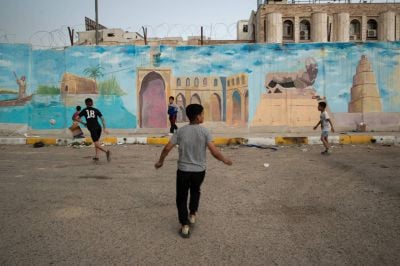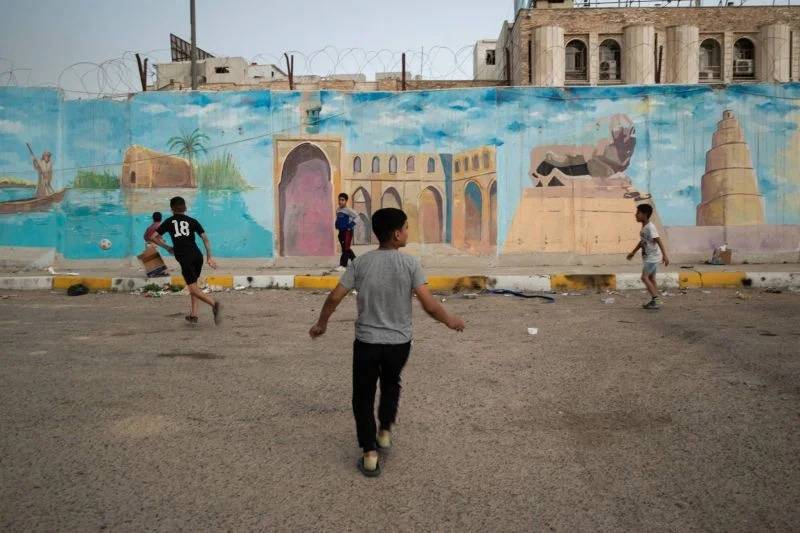
Young people play in the streets of Baghdad. (Credit: Lina Malers)
At dusk in early April in 2003, Ali Jasseb witnessed the first American tanks rolling into Baghdad. The scene looked as if taken from a Hollywood film.
They arrived on the deserted avenue of “Madinat Saddam” (Saddam’s city), the neighborhood named after the dictator they were there to overthrow.
At the time, Ali was just 12 years old and living in a marginalized Shiite neighborhood with his parents and older brothers. They were all admirers of the Shiite opponent Mohammad Sadek Sadr, who had been assassinated four years earlier.
“There were only about 40 of us left in the neighborhood; everyone had fled the bombings,” Ali recounts.
“When we saw the tanks coming with their guns pointed at us, all of us — children and sheikhs — knelt down to recite the shahada, convinced that we were living our last moments. But they passed us by and continued on their way to the center of Baghdad to complete the fall of the regime.”
Roses and stone-throwing
Ali Muften, now in his 30s, remembers that at the time he and his family tried to flee to the south, but the bridges were already destroyed. They also stayed in Madinat Saddam.
He was 11, and he recalls the joy in his home at the fall of the dictator.
“In 1999, my older brother was killed by the army in the Al-Mohssein mosque because he was protesting the assassination of Mohammad Sadek Sadr. Then we received death threats forcing us to leave Baghdad for a year,” Muften, with slicked-back hair, said.
“So, the end of Saddam’s rule was a huge relief for us,” he added as he dipped his fingers into a plate of fried chicken.
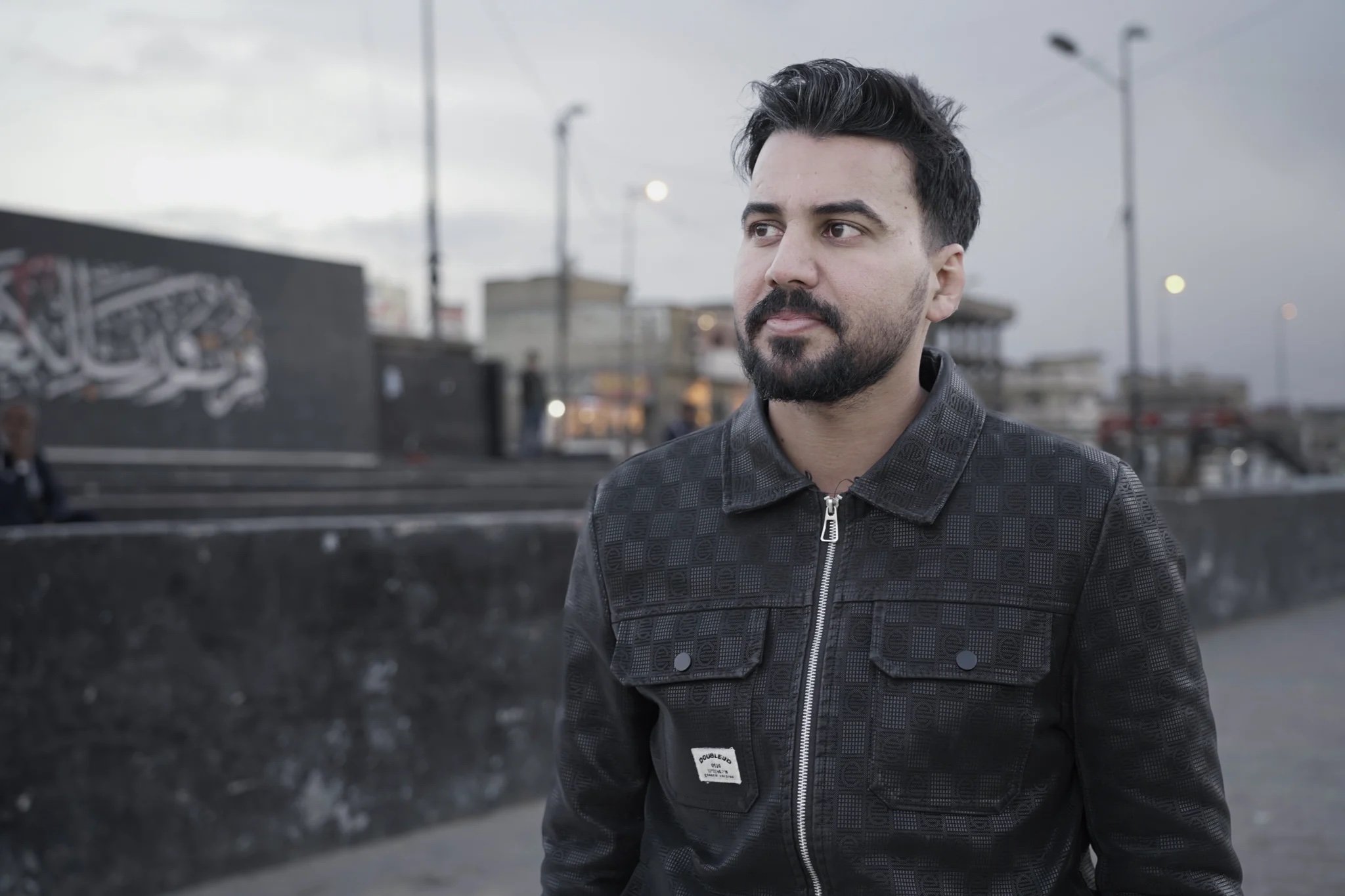 Ali Mouften, Iraqi civil society activist, at Madinat Sadr. (Credit: Lina Malers)
Ali Mouften, Iraqi civil society activist, at Madinat Sadr. (Credit: Lina Malers)
Sitting beside him in the sparsely furnished room, his friend Mohammad Farhan, a tall man with a shiny head and deep-set eyes, chimed in, “When the Americans arrived, we welcomed them with roses.”
On May 1, 2003, George W. Bush famously declared “Mission Accomplished” on the deck of the USS Abraham Lincoln, announcing the end of major combat operations in Iraq and the beginning of American commitment to securing and rebuilding the country.
To facilitate reconstruction, the American civilian administrator, Paul Bremer, initiated a “de-Baathification” campaign, which some criticize as a form of “de-Sunniization.”
The campaign aimed to remove Saddam Hussein’s Baath party from power, which many argue had the unintended consequence of punishing the 30 percent of Iraqis who are Sunni while allowing the 60 percent who are Shiite to take control of the country.
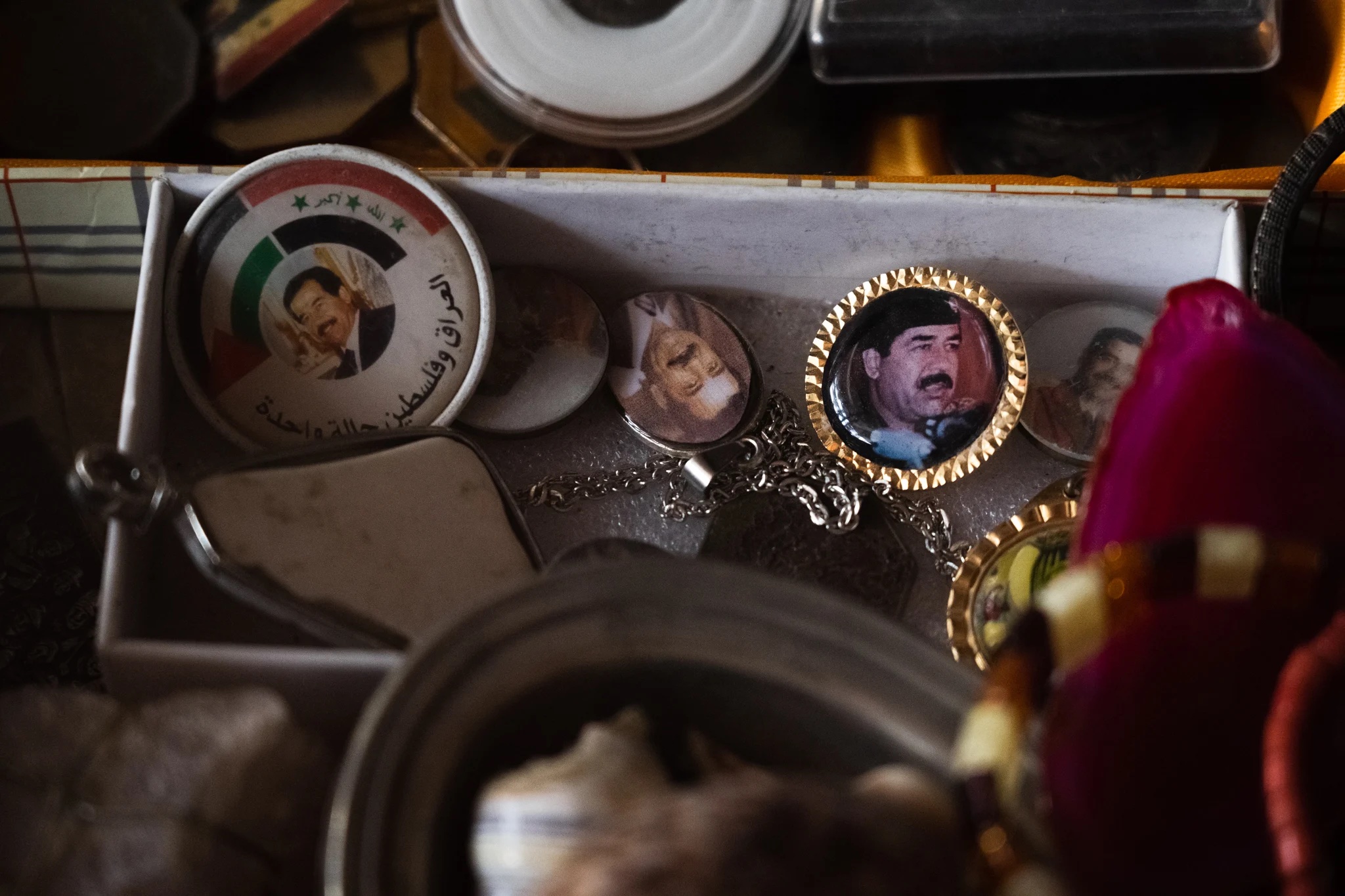 Medallions bearing the likeness of Saddam Hussein at an antique dealer in Baghdad. (Credit: Lina Malers)
Medallions bearing the likeness of Saddam Hussein at an antique dealer in Baghdad. (Credit: Lina Malers)
As a result, Iraq emerged from the ashes of dictatorship as an impoverished and fragmented nation, where religious affiliation took precedence over citizenship, erasing the sense of national identity.
After the statue of the former tyrant was removed from Ferdaous Square on April 9, Madinat Saddam was renamed Madinat Sadr, in honor of the famous Shiite opponent.
Jasseb reminisces about a day when a man came to his school and spoke of the Americans “who had brought down the dictator and flown in 10 others.”
Jasseb, who did not initially comprehend what the man was referring to, soon witnessed the birth of the Mahdi Army and the Madinat Sadr insurgency against the American occupiers. The Mahdi Army was an armed Shiite militia founded by Moqtada Sadr, the son of Mohammad Sadek Sadr.
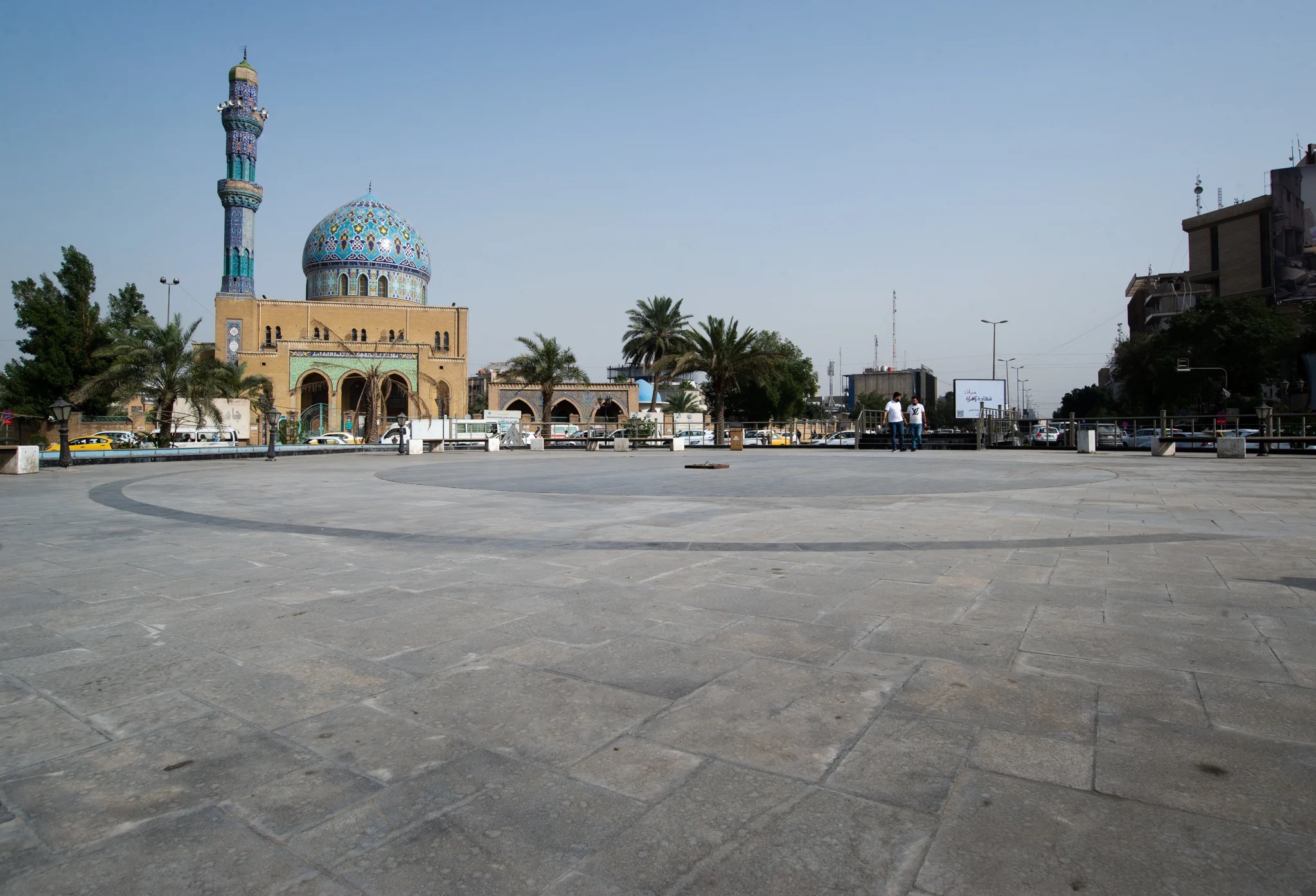 Ferdaous Square in Baghdad, where a statue of Saddam Hussein was toppled on April 9, 2023. (Credit: Lina Malers)
Ferdaous Square in Baghdad, where a statue of Saddam Hussein was toppled on April 9, 2023. (Credit: Lina Malers)
‘Death has become commonplace’
But the Americans who once received a warm welcome with roses now surrounded Madinat Sadr and considered its inhabitants as targets to be shot.
“Even Hamzeh, the little tailor, fell victim to an American sniper,” Jasseb says.
Meanwhile, the Americans were also facing a Sunni insurrection in several cities around Baghdad, from Fallujah to Hilla, in the south.
Ten-year-old Bakr Zoher, a young Sunni from Baghdad who had taken refuge in the area with his family to escape “de-Sunniization,” fell through the cracks.
“The Sunni tribe of Hilla rose up against the Americans, and they responded with a massive detention campaign,” Zoher recalls. “But once I spoke a few words of English I had learned at school, they called me ‘kid’ and gave me notebooks and pencils in the colors of the American flag.”
“But I wasn’t fooled.”
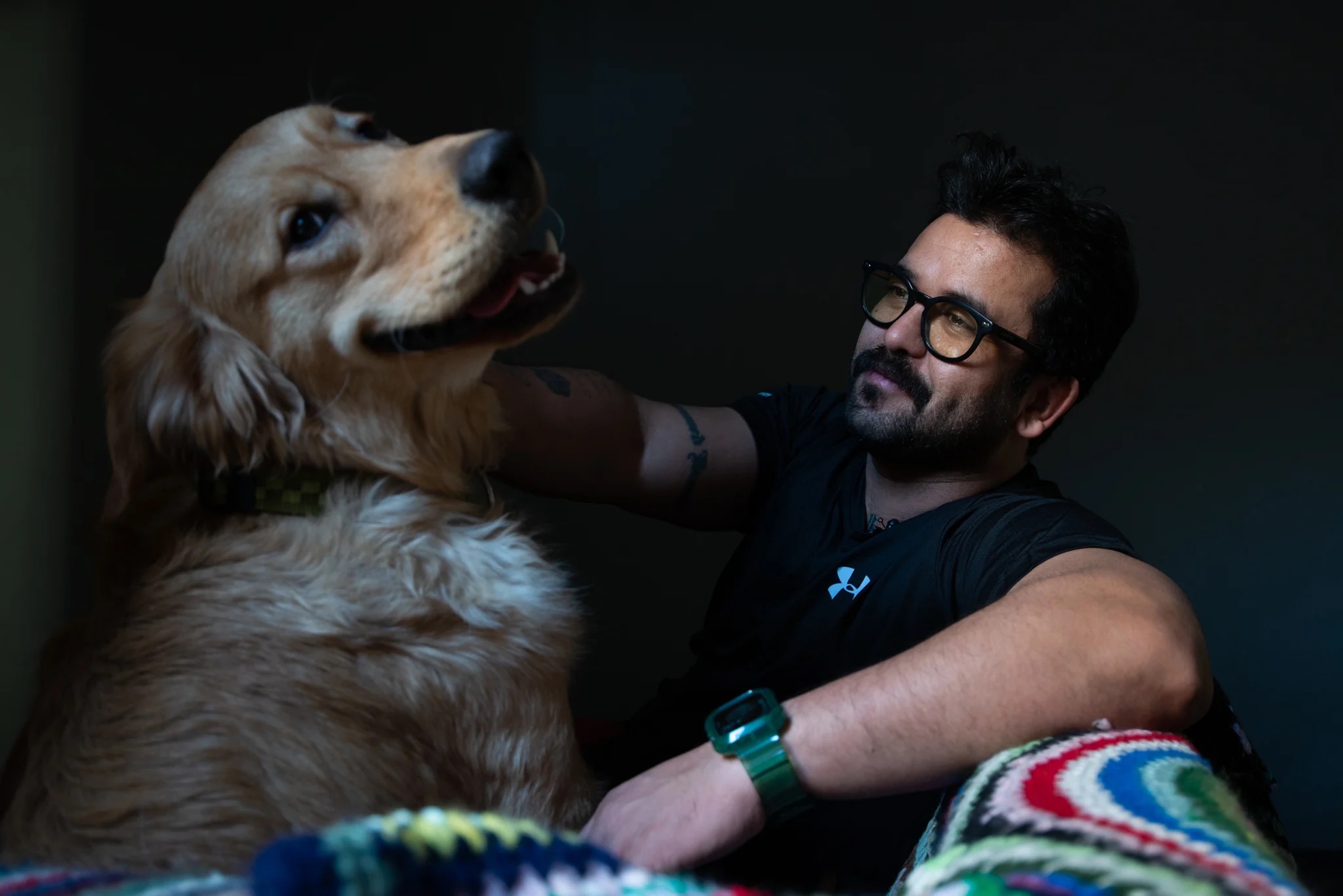 Ali Jasseb, Iraqi civil society activist, with his dog Theo in his apartment in Madinat Sadr. He explains that walking a dog in this Shiite neighborhood is immediately tantamount to being identified as a follower of the Tishreen movement. (Credit: Lina Malers)
Ali Jasseb, Iraqi civil society activist, with his dog Theo in his apartment in Madinat Sadr. He explains that walking a dog in this Shiite neighborhood is immediately tantamount to being identified as a follower of the Tishreen movement. (Credit: Lina Malers)
In 2004, tension between Sunnis and Shiites was rising due to attacks and kidnappings by both al-Qaeda in Iraq, led by Abu Musab al-Zarqawi, and the Mahdi Army.
Muften’s father, a nurse at a hospital, was killed in clashes between the two groups on his way home from work.
Meanwhile, Jasseb had to find work to support his family after his father passed away from an illness in 2005.
Resourceful, he scavenged for objects of all kinds and sold them at the flea market.
“We called it ‘dwar’ because we would go around Baghdad to find good deals. On the team, there were two Haidars, a Saad and another Ali. All Shiites,” Jasseb recalls.
Sometimes Jasseb and his team would even tour the Sunni district of Adhamiya, where al-Qaeda controlled a street.
“One day, Haidar and Haidar were missing. In the evening, we saw a video on the El-Zaoura channel showing members of al-Qaeda slitting their throats in the street. That was the first shock of my life,” Jasseb says.
“After that, death became commonplace.”
In January 2005, amid the prevailing chaos, elections were conducted by Iyad Allawi’s transitional government. Though the polls enabled the formation of a constituent assembly that eventually gave rise to a constitution, they were predominantly boycotted by the Sunnis.
Zoher recollects his father’s despondency toward the “government of the airplanes,” in reference to the politicians who had returned from exile and were gradually assuming control of the nation.
“For him, this was the end of Iraq,” Zoher recalls.
Iraq’s situation remained grim, with the country sinking deeper into turmoil.
The attack on the Shiite Al-Askari shrine in Samarra on Feb. 22, 2006, resulted in the collapse of the mausoleum’s golden dome, and the Sunnis were promptly accused.
The aftermath saw a spate of attacks on Sunni religious sites, and the country descended into a “war of the mosques,” further confirming the prevailing sectarian conflict.
Living as a Shiite in a Sunni-dominated area or vice versa had become nearly inconceivable, making it necessary to carry two identity cards, one for each sect, while traversing Baghdad.
Rania Abbas, a 22-year-old woman with long black hair who grew up near Madinat Sadr, recalls being terrified as a child when her father was threatened with a gun by showing the wrong ID card at a militia checkpoint.
“It was a traumatic experience for me. My father had to flee the country briefly because he couldn’t take it anymore,” she says.
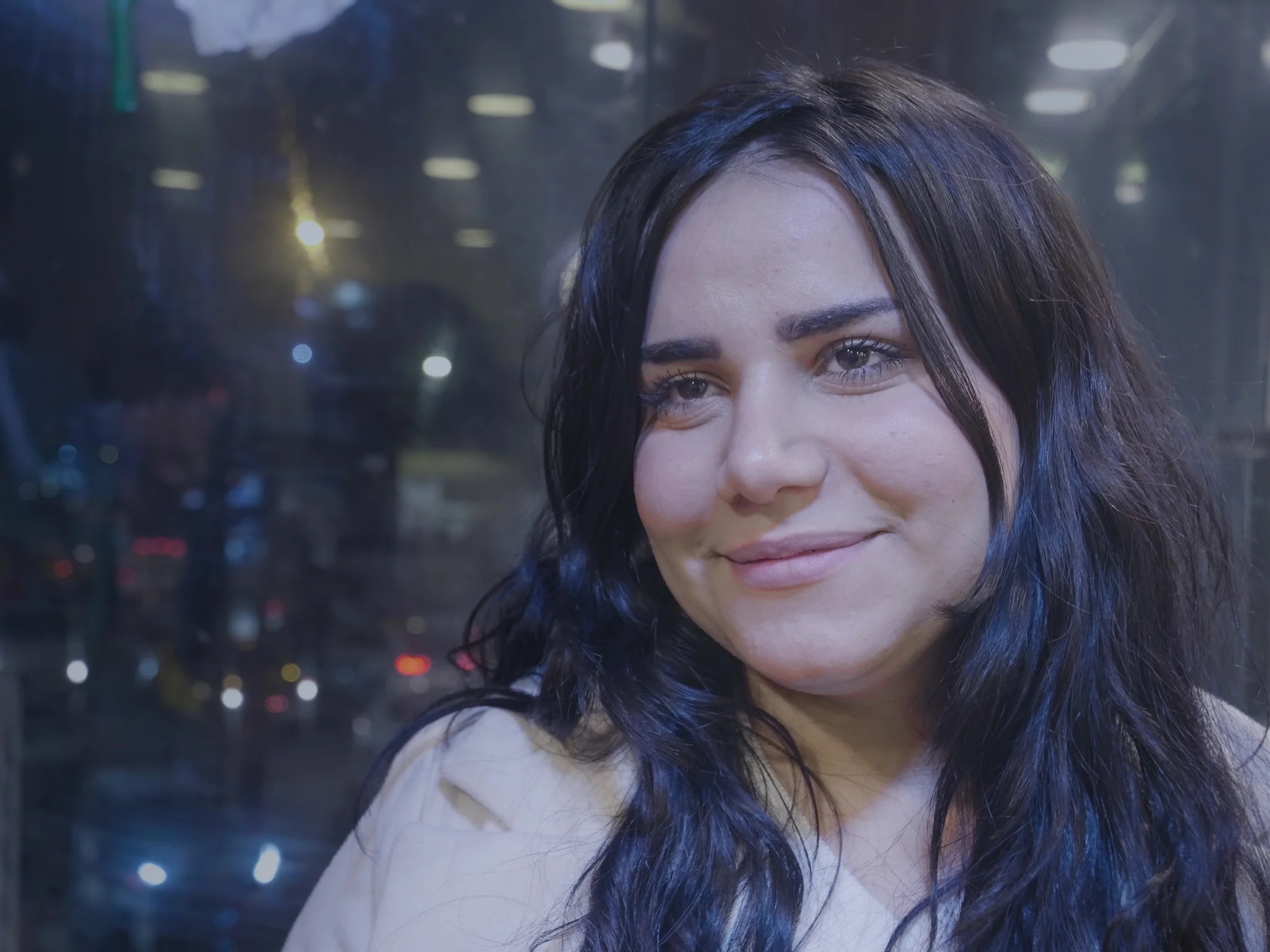 Rania Abbas, a 22-year-old Iraqi political activist, at a cafe in Baghdad's Karrada neighborhood. (Credit: Lina Malers)
Rania Abbas, a 22-year-old Iraqi political activist, at a cafe in Baghdad's Karrada neighborhood. (Credit: Lina Malers)
Explosive belts, breakdancing and Facebook
As Abbas’ father fled the country, Nouri al-Maliki, a former opponent of Saddam who returned from exile in Iran and Syria in 2003, assumed leadership of Iraq in May 2006.
A member of the Shiite party Dawa and the second in command of the “de-Baathification Committee,” he was deemed “the right guy for Iraq,” according to George W. Bush.
However, during his two consecutive terms in office, Maliki showed a preference for the Shiites at the expense of the Sunnis. The latter were subjected to methods of intimidation that the former interim prime minister, Iyad Allawi, deemed in 2007 “even worse” than what was perpetrated during Saddam Hussein’s reign.
From that time on, Iraqis saw suicide attacks become increasingly common.
They became accustomed to the idea that they could die at any moment. Sometimes, staying alive was a matter of luck … or oversleeping.
“I had a friend named ‘Issam al-Wahech’ [Issam the beast]. He had the face of the Joker from Batman but without makeup,” Jasseb quips.
Growing up, Jasseb was into rap music, preferring it to the muezzin’s melodies and risking his life if he wore his “punk” clothes as a teenager in Madinat Sadr.
“[Issam al-Wahesh] used to breakdance with other friends like the handsome Moustapha al-Kurdi. Together, we would go to the ‘punk’ market in Bab al-Sharqi every Friday to buy and sell second-hand clothes,” Jasseb recounts.
“But that day, I overslept until I heard the phone. It was Moustapha’s brother. He didn't dare tell me right away, but Issam and Moustapha had been killed in an explosion.”
Amid the climate of sectarian radicalization pervading the country, the Shiite youth of Madinat Sadr found it arduous to escape the narrow path charted by their immediate circle.
Likewise, on the opposite side of the Tigris, in the Sunni enclave of Dora where Zoher, “the kid,” came back to reside.
He had a propensity for piety. His prospects seemed bleak.
Zoher used to frequent mosques where petrodollars flew in to promulgate a Wahhabi interpretation of Islam.
Concurrently, he witnessed Maliki’s government crushing with brute force the popular uprisings sparked in the aftermath of the 2011 Arab Spring in the Sunni cities of Mosul, Ramadi, Tikrit and Kirkuk.
Alongside him, several young people, thirsting for retaliation, rejoiced at the announcement of the Islamic State in Iraq and the Levant in 2013.
However, something held him back.
“At the mosque, we used to receive game consoles, even money, in exchange for our attendance. Then I began to harbor doubts, which promptly earned me the label of ‘kafir’ [infidel],” Zoher recounts.
“I pondered, if I, a practicing Sunni, was deemed an infidel, what about the Iraqis who consumed alcohol, socialized with women, and had friends of different faiths?”
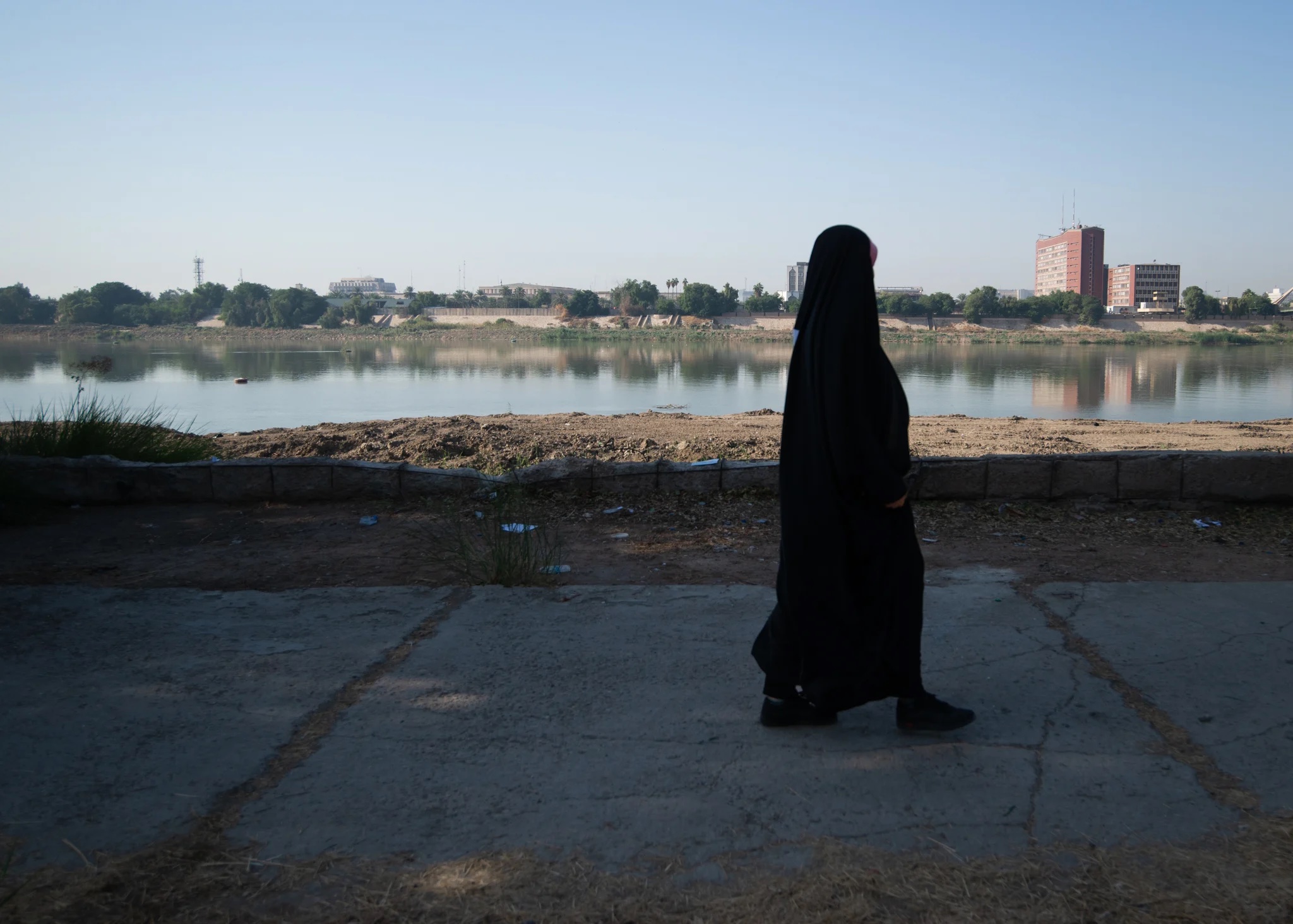 A woman dressed in an abaya walks along the banks of the Tigris. (Credit: Lina Malers)
A woman dressed in an abaya walks along the banks of the Tigris. (Credit: Lina Malers)
The young man’s life took a significant turn as he sought to break free from indoctrination by engaging in charitable activities. But more importantly, he took the bold step of signing up for Facebook.
“I might have been one of the first Iraqis to create a Facebook account,” Zoher says, only slightly exaggerating.
Gradually, his account became filled with pictures of him repairing his school’s walls or distributing school supplies. As a result, he began receiving messages from young people who were inspired to help him.
So, they “formed a team of volunteers,” unaware that soon they would be swapping school benches for the front lines.
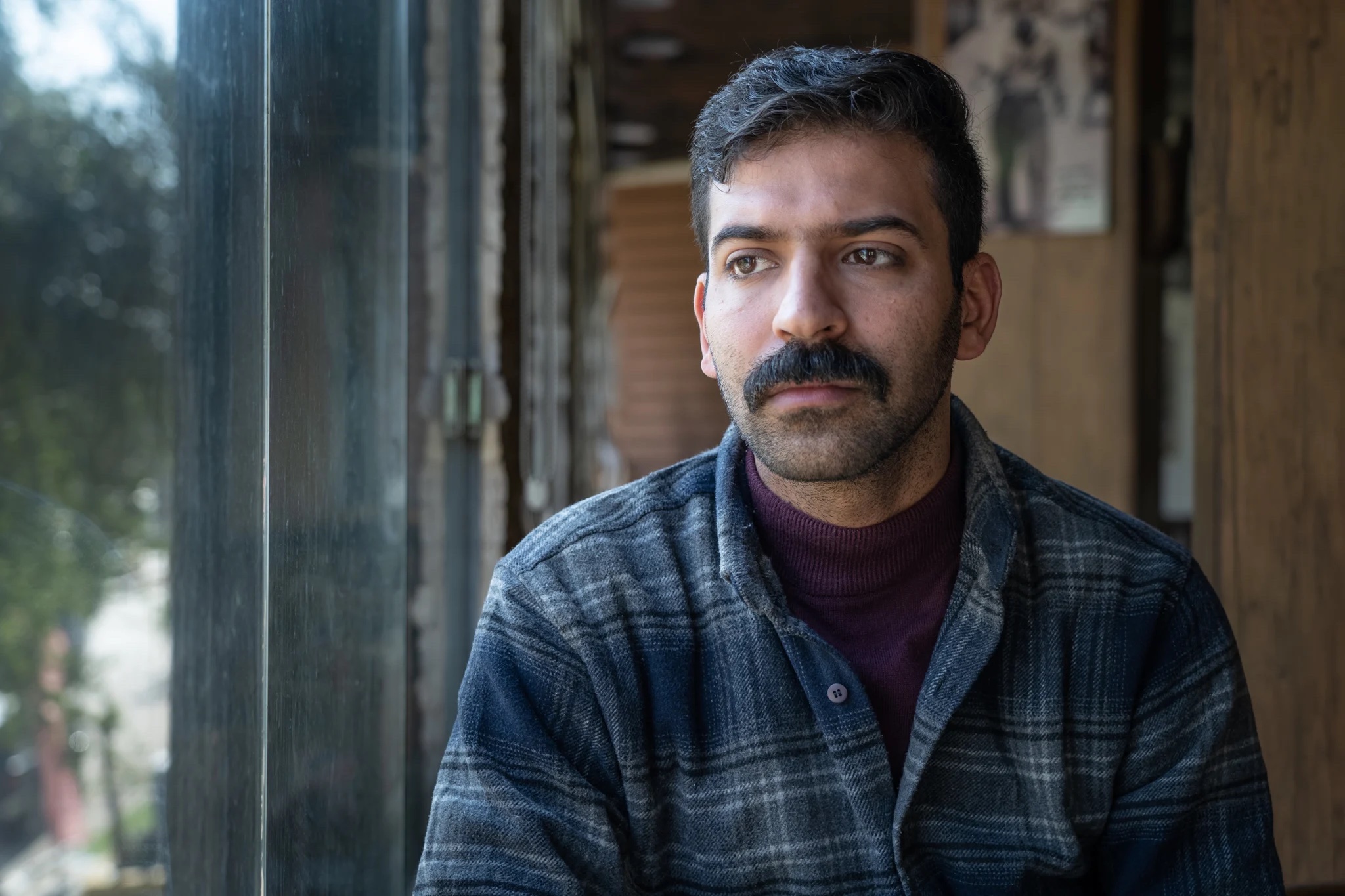 Iraqi human rights activist Bakr Zoher at a cafe in Baghdad's Karrada neighborhood. (Credit: Lina Malers)
Iraqi human rights activist Bakr Zoher at a cafe in Baghdad's Karrada neighborhood. (Credit: Lina Malers)
‘Revolution of thought’
On June 10, 2014, Daeseh, (Islamic State) seized Mosul, Iraq’s second-largest city, following four days of fighting.
Three days later, Grand Ayatollah Ali Sistani, during a sermon in Karbala, urged citizens capable of bearing arms to defend their country, people and holy places.
Zoher responded to the call in his own way.
“Our team began collecting funds to go and distribute medical and food aid to the displaced people and the Iraqi army,” he says.
On June 29, 2014, Daesh leader Abu Bakr al-Baghdadi proclaimed the establishment of a caliphate in the territories under his control. From Raqqa in Syria to Salaheddin in Iraq, the group terrorized a territory inhabited by 7 million people.
Three years after their withdrawal in December 2011 — seen by many as a confession of failure — American soldiers returned to Iraq as part of a 22-nation anti-IS coalition.
The coalition’s strategy was largely characterized by airstrikes.
Farhan joined the army for five years to support his two dependent families.
“I was part of the first force sent from Baghdad to Mosul. It was very hard. Many friends died. I have 21 shrapnel wounds in my head from a car bomb,” he says.
He came back alive, but livid.
“We risked our lives to defend Iraqi territory, but the armed factions that were created at the time began to plunder and appropriate it,” he says, referring to the Popular Mobilization Units (PMUs).
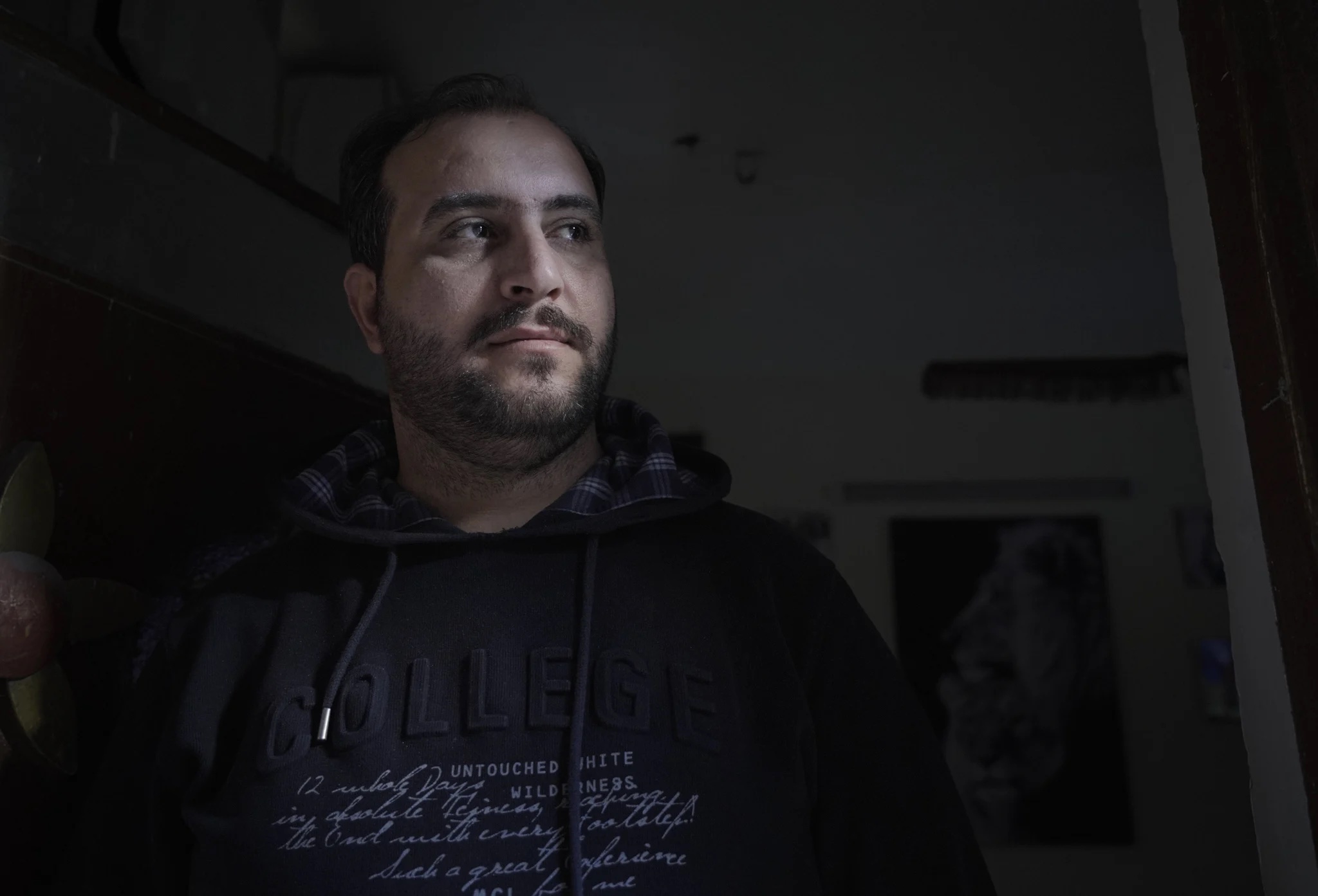 Mohammad Farhan, ex-soldier and Iraqi civil society activist, in his apartment in Madinat Sadr. (Credit: Lina Malers)
Mohammad Farhan, ex-soldier and Iraqi civil society activist, in his apartment in Madinat Sadr. (Credit: Lina Malers)
Born in the wake of Sistani’s call to fight Daesh, accounts began to circulate of the abuses these Iranian-affiliated Shiite militias were committing in the territories retaken from the jihadists.
On Dec. 9, 2017, when Prime Minister Haider al-Abadi announced victory over Daesh, some young Iraqis were circumspect: how could they speak of victory when, with the unprecedented Daesh violence barely behind them, they were already faced with the PMUs insidious threat?
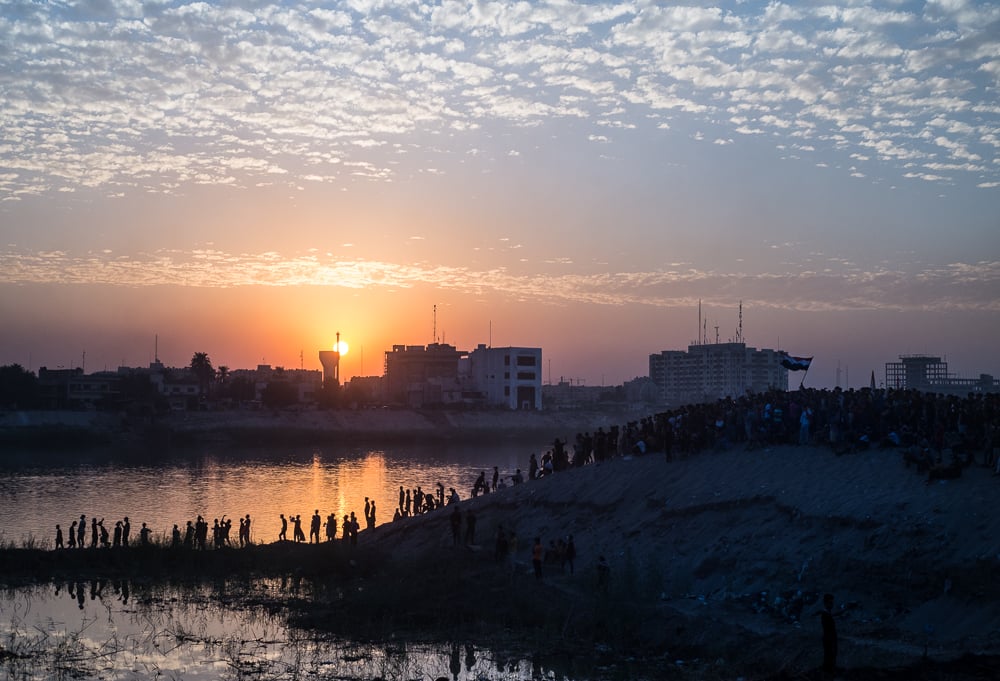 Protesters from the Tisheen movement in Baghdad in 2019. (Credit: Lina Malers)
Protesters from the Tisheen movement in Baghdad in 2019. (Credit: Lina Malers)
‘The cry of all the Iraqi people’
Young Iraqis grew weary of the incessant wars stoked by sectarian leaders, who despite their enmity, seemed to agree on sharing the country’s wealth.
They wondered how the profits from oil disappeared as they were barely making ends meet. Their day-to-day struggles became increasingly difficult, knowing that their country has the fifth largest oil reserves in the world.
Despite their discontent, they lacked a catalyst to transform their doubts into outrage.
Jasseb, who became a psychology student at the time, and grew fond of the works of Freud, Kafka, and Dostoyevsky, recalls witnessing this phenomenon firsthand in Basra in 2018.
“Protests erupted against the deterioration of essential services and corruption. As law enforcement began killing demonstrators, the anger only intensified,” he recounts.
“In Baghdad, we held weekly solidarity demonstrations, and gradually, the spark ignited the most momentous event in modern Iraqi history: the Tishreen movement,” Jasseb says enthusiastically.
For Abbas, whose father was once threatened at a checkpoint,“Tishreen was a cry from all Iraqi people against the American invasion, the sectarian war, against Daesh, against everything.”
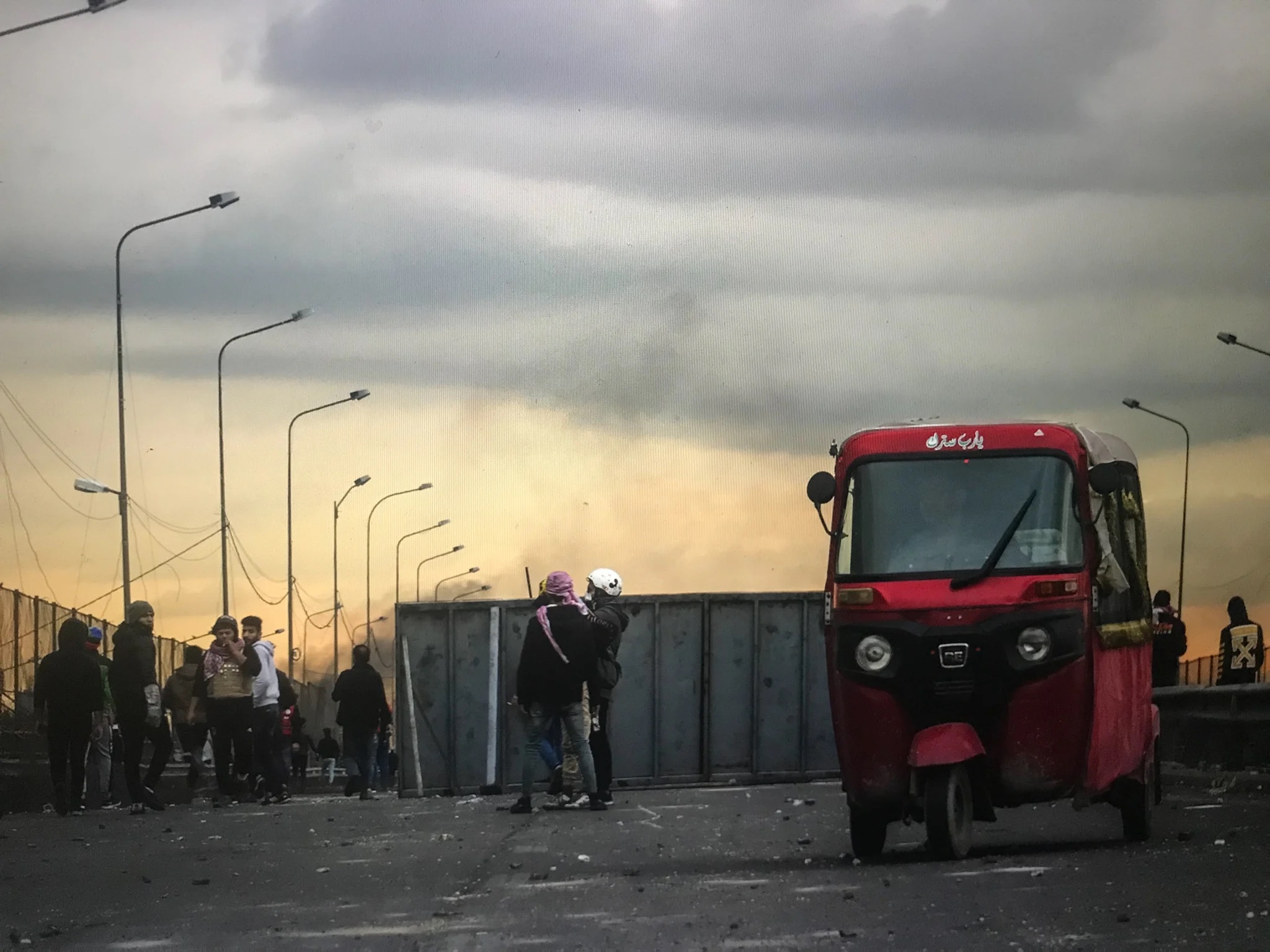 Protesters and a tuk-tuk in front of a roadblock during the Tishreen movement protests in Baghdad. (Credit: Lina Malers)
Protesters and a tuk-tuk in front of a roadblock during the Tishreen movement protests in Baghdad. (Credit: Lina Malers)
The “Tishreen” (Arabic for October) movement, which began in Baghdad’s Tahrir Square on Oct. 1, 2019, marked the culmination of Iraqi frustration with the muhassasa system — a system of religious or ethnic quotas established on the ruins of the Baathist dictatorship that plunged the country into repeated wars and mismanagement, and from which young Iraqis have suffered for two decades.
But on that day, Jasseb was a no-show. He was hungover.
“When I woke up at 4 p.m., a friend informed me that my nephew had been shot in the face with tear gas. I was furious,” he says.
“The following day, I went to the streets, and it was even more crowded than before. But on Oct. 3, snipers shot at the crowd and massacred everyone, young and old, Sunni and Shiite … more than 150 people were killed in the first 10 days, just because they were peacefully demanding their rights,” he recalls.
However, the demonstrations would persist until Oct. 10, which marked the beginning of the Arbaeen pilgrimage, a Shiite religious observance that occurs 40 days after the Day of Ashura.
Activists were preparing to return to Tahrir Square in full force on Oct. 25.
“You cannot imagine how many people came down that day. It was like a wedding, a collective wedding, and people were crying with emotion,” Jasseb says.
It was on that day that this group of friends met for the first time.
Everyone was there.
Zoher set up a medical care tent. Amid the protest, Abbas discovered a passion for politics that led her to launch a liberal party.
Meanwhile, Jasseb took charge of a group of 700 volunteers who had set up in an old school in Tahrir Square.
Tishreen emancipated the group of friends, but not without pain: the brutal repression of the movement by the security forces left indelible scars, sometimes more enduring than the traumas accumulated since the fall of Saddam.
Exhausted by the repression, the demonstrators ultimately withdrew from Tahrir Square in the spring of 2020, following the outbreak of the COVID-19 pandemic.
The human toll was devastating: over 600 people were killed, 21,000 were injured and 29,000 were arrested.
Despite the resignation of then-Prime Minister Adel Abdel-Mahdi in November 2019, Jasseb maintains that Tishreen has failed to disrupt the established order.
“The names change, but the system remains. And the few members of the movement elected as MPs in the October 2021 elections were quickly co-opted by the traditional parties,” he says, expressing a bitter sentiment.
However, Jasseb recognizes that “people's minds” have been irreversibly influenced.
While Jasseb has decided to take a step back, Muften and Farhan remain determined to bring about a new political order, multiplying demonstrations with the Central Committee of the Revolution — a civil society body that grew out of the Tishreen movement.
Farhan is convinced that change will come from the new generation of young Iraqis, who are preparing for change from the bottom up.
“Saddam’s regime took 24 years to fall, and the current system will also eventually collapse,” he says.
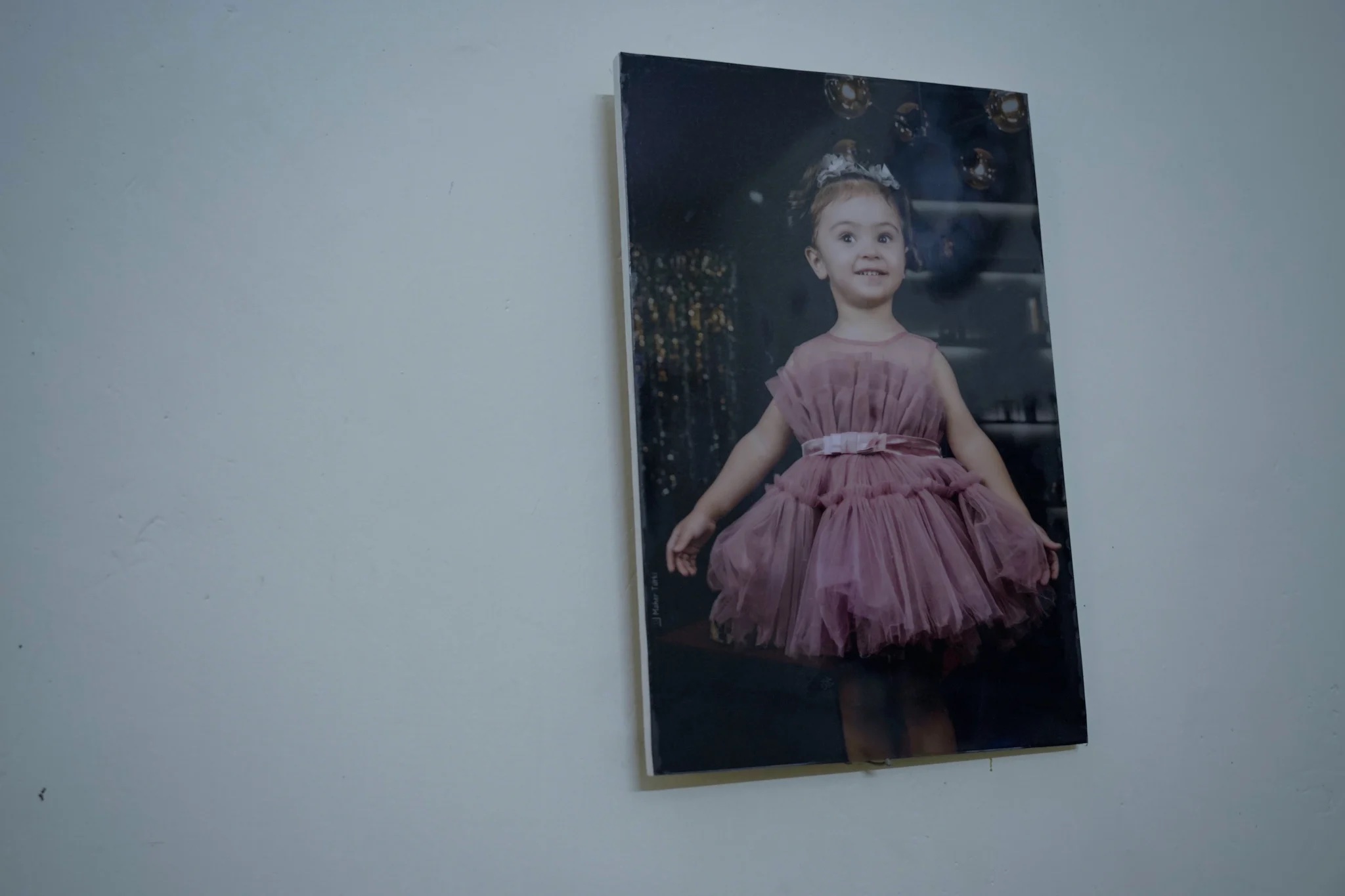 Portrait of Mohammad Farhan's daughter, whom he named Tishreen, in his Madinat Sadr apartment. (Credit: Lina Malers)
Portrait of Mohammad Farhan's daughter, whom he named Tishreen, in his Madinat Sadr apartment. (Credit: Lina Malers)
This article was originally published in French by L'Orient-Le Jour. Translation by Sahar Ghoussoub.
